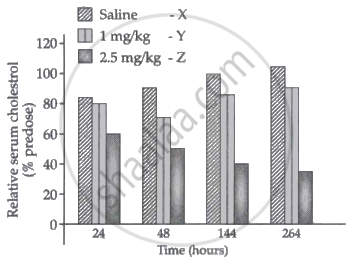Advertisements
Advertisements
Question
You have identified a useful gene in bacteria. Make a flow chart of the steps that you would follow to transfer this gene to a plant.
Solution
After identifying a useful gene in bacteria the following steps should be undertaken
(1) Isolation of useful gene using Restriction Endonucleases
↓
(2) Transferring the gene to a suitable vector to create a recombinant DNA molecule
↓
(3) Transfer of these recombinant DNA molecules to the target cells
↓
(4) Screening of cells for transformation
↓
(5) Selection of transformed cells
↓
(6) Regeneration of plants from the transformed cells to get transgenic plants.
APPEARS IN
RELATED QUESTIONS
Describe any three potential applications of genetically modified plants.
What is the major advantage of producing plants by micropropagation?
what is golden rice.
Silencing of a gene could be achieved through tee use ______.
Bt cotton is not ______.
Gene expression can be controlled with the help of RNA. Explain the method with an example.
|
RNA interference (RNAi) holds great potential as a therapeutic agent for the treatment of human diseases and as biocontrol agents in controlling pests in the field agriculture. An experiment was carried to study the use of 'RNAi' for the potential treatment of disorders of cholesterol metabolism. Some people possess genetic mutations with elevated levels of ApoB gene which predisposes them to coronary artery diseases. Lowering the amount ApoB can reduce the number of lipoproteins and lower the blood cholesterol. Tracy Zimmerman and her colleagues used RNAi in 2006 to reduce the level of ApoB in non human primates Cynomolgus monkeys. One group of monkeys were given RNAi treatment (small interfering RNAs, SiRNAs) (doses 1 mg/kg, SiRNAs), second group of monkeys were given RNAi treatment (doses 2.5 mg/kg, SiRNAs) and third group of monkeys were injected with saline. |
The results of the study are depicted in the graph below:

- How does the treatment with 2.5 mg/kg bring an effect on cholesterol metabolism when compared from 24 hours and 144 hours?
- Write any two natural sources from where dsRNA molecule could be obtained for silencing the specific mRNA.
- How is RNAi used in controlling the infection on the roots of tobacco plants by the nematode Meloidogyne incognitia?
State any two benefits of Genetically modified crops.
Compare and contrast the disadvantages of production of genetically modified crops.
Name an organism that produce cry proteins.
